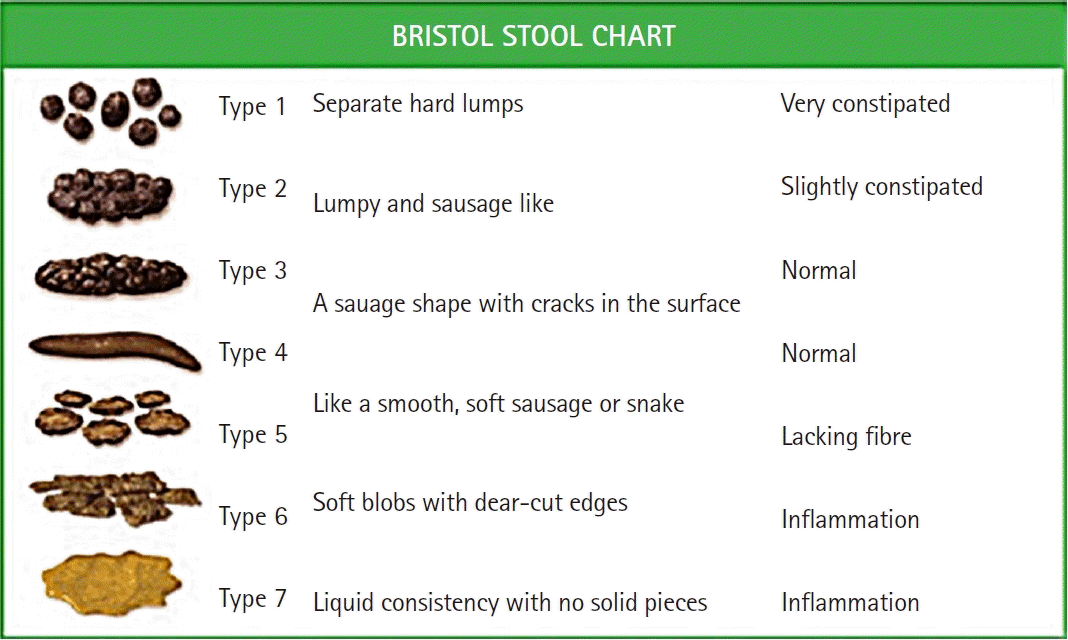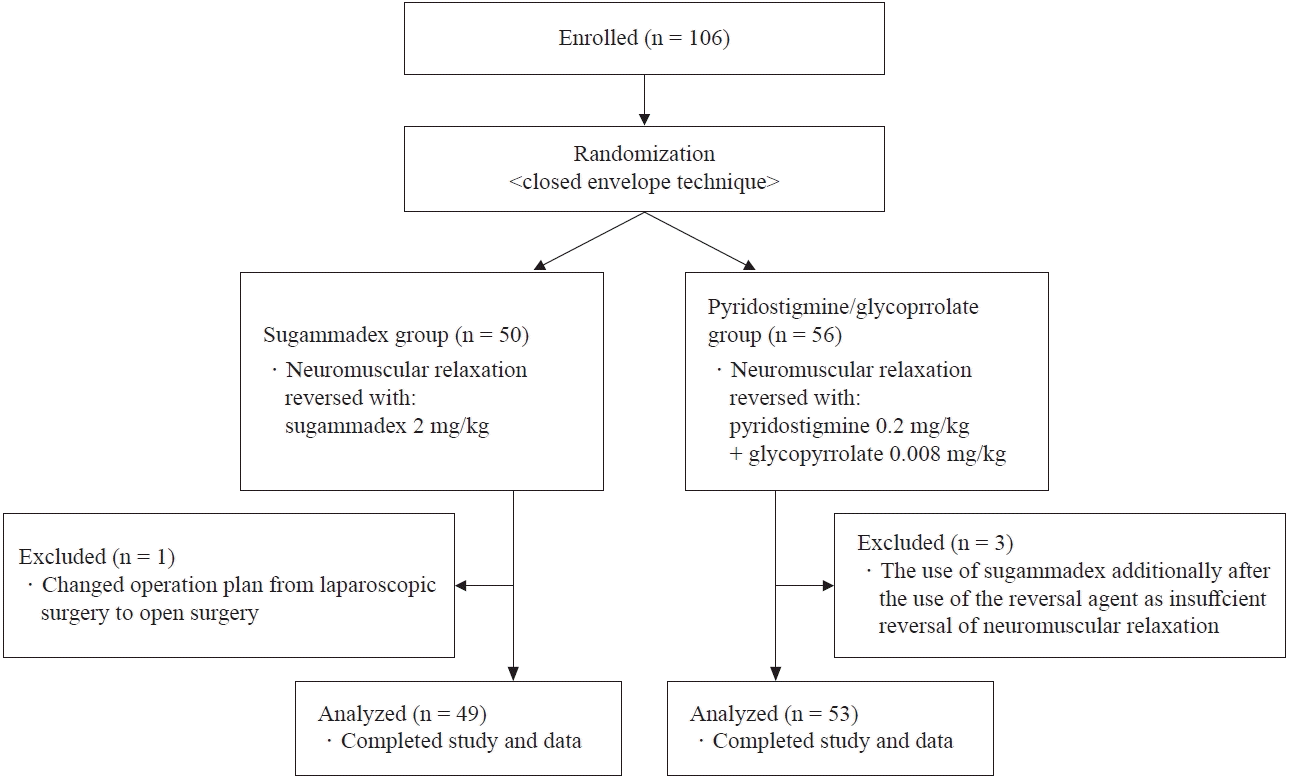1. Blobner M, Frick CG, Stäuble RB, Feussner H, Schaller SJ, Unterbuchner C, et al. Neuromuscular blockade improves surgical conditions (NISCO). Surg Endosc. 2015; 29:627–36.

2. Mirakhur RK, Briggs LP, Clarke RSJ, Dundee JW, Johnston HM. Comparison of atropine and glycopyrrolate in a mixture with pyridostigmine for the antagonism of neuromuscular block. Br J Anaesth. 1981; 53:1315–20.

3. Sacan O, White PF, Tufanogullari B, Klein K. Sugammadex reversal of rocuronium-induced neuromuscular blockade: a comparison with neostigmine-glycopyrrolate and edrophonium-atropine. Anesth Analg. 2007; 104:569–74.

4. Althausen PL, Gupta MC, Benson DR, Jones DA. The use of neostigmine to treat postoperative ileus in orthopedic spinal patients. J Spinal Disord. 2001; 14:541–5.

5. Olesnicky BL, Traill C, Marroquin-Harris FB. The effect of routine availability of sugammadex on postoperative respiratory complications: a historical cohort study. Minerva Anestesiol. 2017; 83:248–54.

6. Brueckmann B, Sasaki N, Grobara P, Li MK, Woo T, De Bie J, et al. Effects of sugammadex on incidence of postoperative residual neuromuscular blockade: a randomized, controlled study. Br J Anaesth. 2015; 115:743–51.

7. Sustic A, Dijana D. Early postoperative gastric emptying in patients undergoing laparoscopic cholecystectomy: sugammadex vs. neostigmine/atropine neuromuscular blockade reversal agents: 9AP4-1. Eur J Anaesthesiol. 2012; 29:140.
8. Lassen K, Soop M, Nygren J, Cox PB, Hendry PO, Spies C, et al. Consensus review of optimal perioperative care in colorectal surgery: enhanced recovery after surgery (ERAS) group recommendations. Arch Surg. 2009; 144:961–9.
9. Gustafsson UO, Scott MJ, Schwenk W, Demartines N, Roulin D, Francis N, et al. Guidelines for perioperative care in elective colonic surgery: enhanced recovery after surgery (ERAS®) society recommendations. World J Surg. 2013; 37:259–84.

10. Scott MJ, Baldini G, Fearon KC, Feldheiser A, Feldman LS, Gan TJ, et al. Enhanced recovery after surgery (ERAS) for gastrointestinal surgery, part 1: pathophysiological considerations. Acta Anaesthesiol Scand. 2015; 59:1212–31.
11. Chae YJ, Joe HB, Oh J, Lee E, Yi IK. Thirty-day postoperative outcomes following sugammadex use in colorectal surgery patients; retrospective study. J Clin Med. 2019; 8:E97.

12. Feldman M, Schiller LR. Disorders of gastrointestinal motility associated with diabetes mellitus. Ann Intern Med. 1983; 98:378–84.

13. Annese V, Bassotti G, Napolitano G, Usai P, Andriulli A, Vantrappen G. Gastrointestinal motility disorders in patients with inactive Crohn’s disease. Scand J Gastroenterol. 1997; 32:1107–17.

14. Jones C, Badger SA, Hannon R. The role of carbohydrate drinks in preoperative nutrition for elective colorectal surgery. Ann R Coll Surg Engl. 2011; 93:504–7.

15. Khosla S. Hypercalcemia and hypocalcemia. In: Harrison’s Principles of Internal Medicine. 17th ed. Fauci AS, Braunwald E, Kasper DL, Hauser SL, Longo DL, Jameson JL, editors. New York: McGraw-Hill;2009. p. 959.
16. Butterworth JF, Mackey DC, Wasnick JD. Morgan & Mikhail’s Clinical Anesthesiology. 5th ed. New York: McGraw-Hill;2013. p. 1166–9.
18. Sen A, Erdivanli B, Tomak Y, Pergel A. Reversal of neuromuscular blockade with sugammadex or neostigmine/atropine: effect on postoperative gastrointestinal motility. J Clin Anesth. 2016; 32:208–13.

19. Kreis ME, Kasparek M, Zittel TT, Becker HD, Jehle EC. Neostigmine increases postoperative colonic motility in patients undergoing colorectal surgery. Surgery. 2001; 130:449–56.

20. De Giorgio R, Barbara G, Stanghellini V, Tonini M, Vasina V, Cola B, et al. The pharmacological treatment of acute colonic pseudo‐obstruction. Aliment Pharmacol Ther. 2001; 15:1717–27.

21. Wilkins JL, Hardcastle JD, Mann CV, Kaufman L. Effects of neostigmine and atropine on motor activity of ileum, colon, and rectum of anaesthetized subjects. Br Med J. 1970; 1:793–4.

22. Butterworth JF, Mackey DC, Wasnick JD. In: Morgan & Mikhail’s Clinical Anesthesiology. 5th ed. Butterworth JF, Mackey DC, Wasnick JD, editors. New York: McGraw-Hill;2013. p. 235–6.
23. Fuchs-Buder T, Meistelman C, Raft J. Sugammadex: clinical development and practical use. Korean J Anesthesiol. 2013; 65:495–500.

24. Cha JE, Park SW, Choi YI, Oh ID, Kang HY, Lee SH, et al. Sugammadex use can decrease the incidence of post-operative urinary retention by avoiding anticholinergics: a retrospective study. Anesth Pain Med. 2018; 13:40–6.

25. Melnyk M, Casey RG, Black P, Koupparis AJ. Enhanced recovery after surgery (ERAS) protocols: time to change practice? Can Urol Assoc J. 2011; 5:342–8.

26. Cheng CR, Sessler DI, Apfel CC. Does neostigmine administration produce a clinically important increase in postoperative nausea and vomiting? Anesth Analg. 2005; 101:1349–55.

27. Murphy GS, DeBoer HD, Eriksson LI, Miller RD. In: Miller’s Anesthesia. 8th ed. Miller RD, Cohen NH, Eriksson LI, Fleisher LA, WienerKronisj JP, Young WL, editors. Philadelphia, Churchill Livinstone: Elsevier Health Sciences;2014. p. 995–1025.
28. Mirakhur RK, Dundee JW. Glycopyrrolate: pharmacology and clinical use. Anaesthesia. 1983; 38:1195–204.

29. Hearing SD, Thomas LA, Heaton KW, Hunt L. Effect of cholecystectomy on bowel function: a prospective, controlled study. Gut. 1999; 45:889–94.

30. Livingston EH, Passaro EP. Postoperative ileus. Dig Dis Sci. 1990; 35:121–32.






 PDF
PDF Citation
Citation Print
Print




 XML Download
XML Download